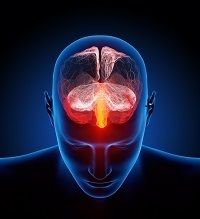Migraines Linked to High Sodium Levels in Cerebrospinal Fluids
Sodium concentrations were significantly higher in the brain’s cerebrospinal fluid in migraine patients.

Those who suffer from migraine have significantly higher sodium concentrations in their cerebrospinal fluid compared to those without the condition, according to a new study published at Radiological Society of America (RSNA) annual meeting.
Researchers from University Hospital Mannheim and Heidelberg University in Germany examined patients with migraine through a sodium MRI in order to measure sodium levels in various parts of the brain. This is the first study to use the technique, cerebral sodium (23Na) MRI, to examine patients with migraine.
“It would be helpful to have a diagnostic tool supporting or even diagnosing migraine and differentiating migraine from all other types of headaches,” study author, Melissa Meyer, MD, radiology resident, Institute of Clinical Radiology and Nuclear Medicine, University Hospital Mannheim and Heidelberg University, said in a statement. “These findings might facilitate the challenging diagnosis of a migraine.”
Researchers explored the technique as a possible means to help in the diagnosis and to understand migraine attacks, since studies show that sodium plays an important role in brain chemistry.
In the study, researchers recruited 12 female patients with a mean age of 34, who were clinically evaluated for migraine. The participants filled out a questionnaire regarding the onset of the disease, length, intensity and frequency of migraine attacks and accompanying auras.
Twelve healthy female controls, with a mean age of 34, were also enrolled for participation in the study.
Both arms underwent a cerebral 23Na-MRI exam at 3.0T. Circular regions of interest (ROIs) were placed in predetermined anatomic regions: anterior and posterior cerebrospinal fluid, gray and white matter, brain stem and cerebellum. External 23Na reference phantoms were used to calculate the 23Na tissue concentrations. 23Na concentrations of migraine patients and healthy controls were compared and statically analyzed by Wilcoxon rank sum test.
Researchers found no statistical differences between the 2 arms in sodium concentrations of the gray and white matter, brain stem and cerebellum; however, significant differences emerged when sodium concentrations were examined in the cerebrospinal fluid.
Findings concluded 23Na concentrations in the anterior cerebrospinal fluid (CSF) region of patients with evident migraine were significantly higher than in healthy controls (79 mmol ±7 versus 69 mmol ±4, respectively).
Similar findings were discovered with 23Na concentrations in the posterior CSF region, with higher sodium levels in patients with migraine versus healthy controls (85 mmol ±6 versus 63 mmol ±8, respectively).
Overall, sodium concentrations were significantly higher in the brain’s cerebrospinal fluid in patients with migraine than in the healthy control group.
Migraines, which affect about 18% of women and 6% of men are challenging to diagnose as the characteristics and types of attacks differ widely among patients.
The findings of the study facilitate the challenging diagnosis of a migraine. Researchers hope to learn more about the connection between migraines and sodium in future studies.
“As this was an exploratory study, we plan to examine more patients, preferably during or shortly after a migraine attack, for further validation,” Meyer noted.
A press release has been made available.
Related Coverage
Amgen/Novartis's Erenumab (Aimovig) Posts Positive Phase 3 Results in NEJM
RedHill Biopharma Submits NDA for New Rizatriptan Formula
Lilly's Lasmiditan Drastically Reduces Pain in Migraine Patients